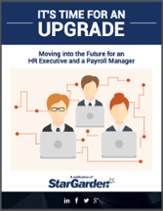Top Reasons Why Millennials & Generation Z Quit – and How to Fix Them

Everyone knows today’s workplace is incredibly different than the former generation of corporate life. Far from retiring with the same company they went to work for decades earlier, the individuals entering the workforce now will likely have dozens of jobs over their lifetimes – possibly in radically different fields. Millennials and Generation Z workers expect to stay in a job, on average, for only three years. But the average cost of replacing one of these employees ranges from $15,000 - $20,000. Why are young workers leaving jobs so frequently, and how can you entice them to stay with your company?
1. Experience over longevity
One of the biggest reasons millennials and Generation Z leave organizations is the lack of career opportunities. Younger workers no longer possess the desire for workplace longevity. They're looking to use this early part of their careers to expand their skillset and explore different jobs in various industries. There has also been a shift in the employer-employee relationship, as employees now have higher expectations for their employer and the brand they work for. So if organizations aren't implementing career development opportunities, or identifying ways where younger workers can grow, they will most likely see a high turnover rate for these employees.
Solution: Employers need to reshape their mindset and focus on "how much they can accomplish" with employees vs. "how long can they keep them". The goal is to create a trust filled employer-employee relationship to drive employee retention.
2. Having no hope for a future in your organization
Another side effect of an uncertain economy is reduced expectations and security. While it’s no longer feasible to provide lifetime job security and pensions for all employees, offering employees opportunities for growth, development, and improvement is vital to retaining millennials and Generation Z.
54% of Millennials and 72% of Generation Z workers either want to start a business or already have started one.
A concept called “intrapreneurship” rewards employees who create, contribute, and innovate on behalf of the organization. Letting employees pitch ideas, put teams together, and work to implement visionary solutions can allow them creative freedom, empowerment, and satisfaction – within your organization. Open communication about employees’ career progression and development can help you improve employee engagement and ensure that your relationship remains mutually beneficial.
Solution: Giving your team incentives to create, lead, and grow can help them become more invested in your company’s future, rather than striking out on their own.
3. In need of a strong community bond
“Community” is one of the strongest motivating factors of millennial and Generation Z employees. Many companies still operate on a framework of internal competition, which can repel young workers. Fostering a sense of community support within your organization, including through mentorship programs, team projects, or collaborative workspaces, can help attract and keep younger workers.
In addition to improving your internal company community culture, investing in your external community can yield surprising benefits. Encouraging volunteering as a company can improve your team morale, build community goodwill for your business, and attract clients and business opportunities. Help your team feel like they are doing work that makes a difference in the work around them.
Solution: Encourage collaboration, community involvement, and cooperation, both within your company and in the surrounding community, to encourage a sense of place, purpose, and belonging.
4. Fencing them in
Growing up in an increasingly connected, interdependent, globalized society, millennials and Generation Z value freedom and flexibility. Many want to travel, experience other cultures, and live in different places. Even if they don’t have a case of wanderlust, many want the freedom to fully participate in their family and community, rather than being chained to a desk during traditional working hours.
45% of millennial workers say they would choose increased workplace flexibility over increased pay.
Implementing systems and programs that allow employees to work remotely so they can harmonize their work with their out-of-work life and priorities, is key to retaining millennial and Generation Z employees. The pandemic reshaped the corporate world, as 50% of the modern workforce now does their job through telecommuting and remote collaboration. This benefits everyone: when employees can spend time with their family or on other outside life priorities while still at your company, they are less likely to leave in order to do so. Plus, flexible working arrangements lead to better employees: a study published in the Harvard Business Review found that employees who work remotely were happier, more productive, and less likely to quit.
Solution: Modern cloud-based networks can enable your employees to work remotely from anywhere they have an Internet connection and allow them the flexibility they need to be happy, productive, long-term members of your team.
StarGarden's HR software can help you efficiently and effectively coordinate all aspects of HR and HCM, including integrated payroll and scheduling systems, personnel management, real time talent analytics, trend analysis and forecasting reports, analysis of time and cost on a minute-by-minute basis, and so much more. StarGarden’s HCM workflow solutions can help you manage the workforce of the future, wherever they’re working.
Whether you’re just starting out with an integrated HCM system or it’s time for an upgrade to your current HCM software, contact us today. Our brand-new StarGarden 5.0 HCM suite is easier to integrate and use than ever before – and you can try it out for free. Want to learn more? Click the link below.
[1] https://hbr.org/2014/01/to-raise-productivity-let-more-employees-work-from-home
[2]http://www2.warwick.ac.uk/newsandevents/pressreleases/new_study_shows/
Shawbel, Dan. “The Cost of Millennial Retention Study.” Millennial Branding. Millennial Branding, 6 Aug 2013. Web. 26 Jan 2016.
https://www.businessnewsdaily.com/7012-millennial-job-hopping.html

